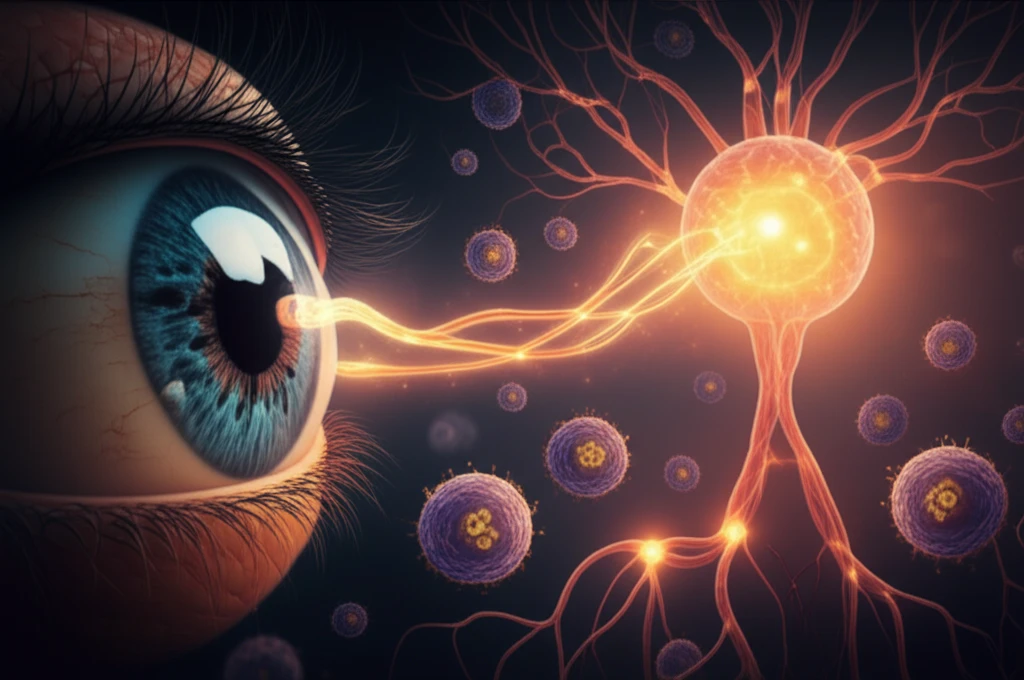
Hope for Sight: How Simvastatin Could Revolutionize Treatment for Eye Injuries
"Groundbreaking research reveals simvastatin's potential to protect vision by reducing inflammation after optic nerve damage."
Imagine a world where a severe eye injury doesn't automatically lead to permanent vision loss. While it sounds like something out of a science fiction movie, recent research is pointing to a future where such outcomes might become a reality. The key? A seemingly unassuming drug called simvastatin, commonly prescribed to lower cholesterol.
Scientists have discovered that simvastatin possesses neuroprotective properties, potentially revolutionizing how we treat injuries to the optic nerve. The optic nerve, essentially the cable connecting the eye to the brain, is incredibly vulnerable to damage. Such damage can be caused by trauma, diseases like glaucoma, or other conditions, often leading to irreversible vision loss.
This article delves into the groundbreaking research showing how simvastatin may protect vision after optic nerve damage, explaining the science behind its effectiveness and what it could mean for the future of eye care. It offers a beacon of hope for those affected by eye injuries and for the broader medical community striving to find new and effective treatments.
The Science Behind the Vision: How Simvastatin Works to Protect the Eyes

The research, published in PLOS ONE, focuses on how simvastatin helps mitigate the damage caused by neuroinflammation, a key factor in the death of retinal ganglion cells (RGCs) following an optic nerve injury. These cells are crucial for transmitting visual information to the brain.
- Reduced Inflammation: Simvastatin decreased the presence of inflammation-causing cells (microglia/macrophages) at the injury site.
- Astrocyte Control: Simvastatin inhibited the activation of astrocytes, preventing them from contributing to the inflammatory response.
- RGC Preservation: The drug helped save retinal ganglion cells, crucial for vision, thus protecting vision after optic nerve damage.
- NF-kB Suppression: Simvastatin reduced the activation of NF-kB, a key molecule in inflammatory processes.
Looking Ahead: The Future of Simvastatin in Eye Care
This research marks a significant step forward in our fight against vision loss due to optic nerve injuries. While more research, including clinical trials, is necessary to confirm these findings and to establish safe and effective treatment protocols, the potential benefits of simvastatin are promising. The discovery underscores the importance of continued research and the potential of repurposing existing medications to combat a wide range of diseases and injuries, bringing hope for improved vision and quality of life for many.
